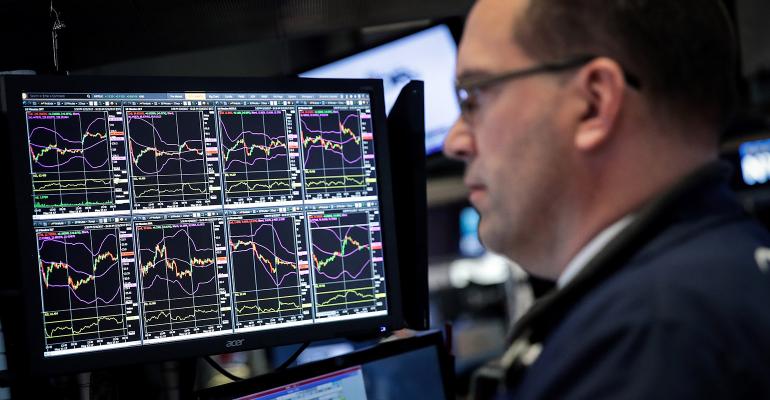By Oliver Renick and Elena Popina
(Bloomberg) --The U.S. stock market, an imperturbable monolith so tranquilized by index funds that not even the threat of nuclear annihilation can move it from its moorings? Not quite.
Not that the S&P 500 Index hasn’t looked stupefied this summer. One record after another fell, the VIX crawled along near record lows, and V-shaped rebounds materialized on the back of seemingly any major news event.
Less visible was what happened underneath, where stocks have been swinging independently from one another and the gap between the best-performing industry and the worst is the widest since the beginning of the bull market. It’s below the surface that small-cap stocks have flipped leadership with mega-caps, health-care has leapfrogged finance among industry groups, and growth-oriented companies are soaring past value shares.
Bottom line: if you’re looking for action, it hasn’t been hard to come by in equities.

“You have a lot of cross-currents that are forcing the market to churn, it’s not as quiet as one might think,” Walter Todd III, chief investment officer at Greenwood Capital Associates LLC. “Nervousness is going up. The dysfunction in the White House has gotten worse, the situation in North Korea has deteriorated, even though the economic data is looking good.”
Divergence Across Industries
Relationships among stocks are loosening. Three-month realized correlation in the S&P 500, which measures how much members of the benchmark are moving in lockstep, has hit its lowest average level since at least 2011, according to data compiled by Bloomberg.
That illustrates the chaos and also shows why the gauge doesn’t move much, since you need a lot of companies going the same way to get a sharp swing. One stock may bounce wildly, but if another goes in the opposite direction, the market seems to sit still.
Divergences are also cropping up across industry groups this year. Technology firms, the biggest winners, are up 25 percent. That’s a 41 percentage-point lead over energy shares, the biggest laggards. The gap between the two is the widest since 2009.
Size Matters
Volatility also exists in the meanderings of the so-called Trump trade. Companies and industries that rallied in the wake of the November election are now falling behind peers in industries like technology and health-care, which are leading the market in 2017.
There’s turnover based on size, too. Small-cap stocks more than doubled the performance of the S&P 500 in 2016, helped by a 14 percent surge in the last two months after President Trump’s victory spurred investment in domestic companies. That’s flipped this year, with the Russell 2000’s 4.2 percent gain trailing the S&P 500’s 11 percent climb.

Stock market churn is jumbling the leader board among investing styles. Value stocks are back in the doghouse, offering just a 3.5 percent gain this year, after almost tripling the return of growth-oriented companies last year. Meanwhile, growth shares have rallied 18 percent in 2017.
Signs point to investors becoming more discerning over corporate health as well. Companies with strong balance sheets are beating those with weak ones by 5.6 percent so far this year, on pace for the biggest outperformance since 2011, according to indexes maintained by Goldman Sachs.
Active Opportunities
What’s it all mean? For one, more opportunities for active managers. In 2015, the correlation of stocks in the S&P 500 climbed to the highest levels since the 2011 debt crisis, and it jumped again in the run-up to the U.S. election, before plunging at the start of this year.
Partly bolstered by a record overweight in technology shares, July marked the fifth straight month in which more than half of large-cap fund managers beat their benchmark indexes, according to data compiled by Bank of America Corp. That’s the best streak since 2009.
Meanwhile, investors yanked $100 billion from mutual funds in the first seven months of 2017 while adding $80 billion to ETFs, a slowdown of passive flows from last year.
“When the Fed, ECB and BOJ took trillions of dollars of assets off the market it left fewer things to buy and so blind buyers just bought up indexes,” Michael O’Rourke, chief market strategist at JonesTrading Institutional Services LLC. “As those flows slow down you may start to see stocks act differently and this may be the start of more dispersion emerging.”
To contact the reporters on this story: Oliver Renick in New York at [email protected] ;Elena Popina in New York at [email protected] To contact the editors responsible for this story: Chris Nagi at [email protected] Eric J. Weiner





